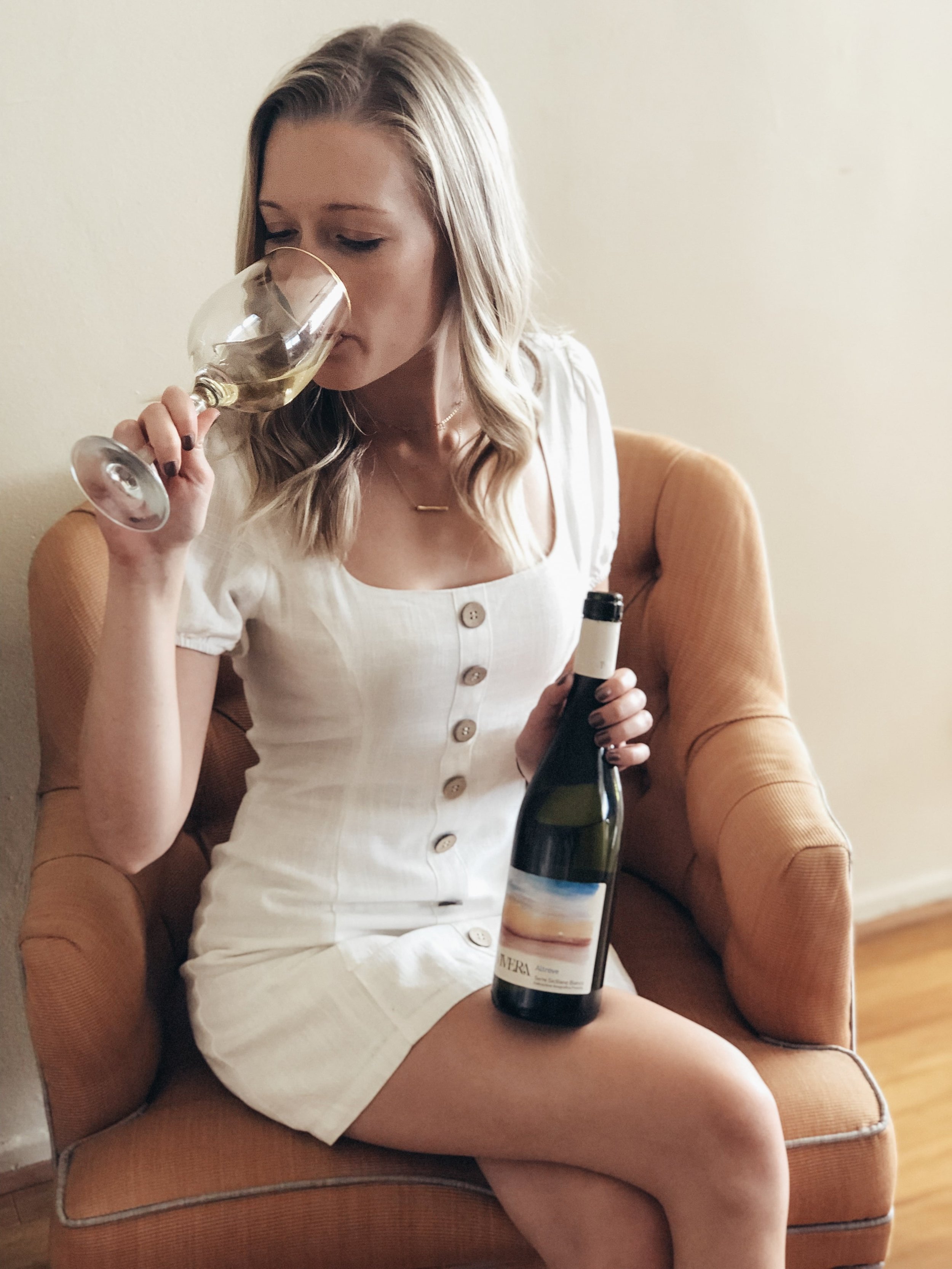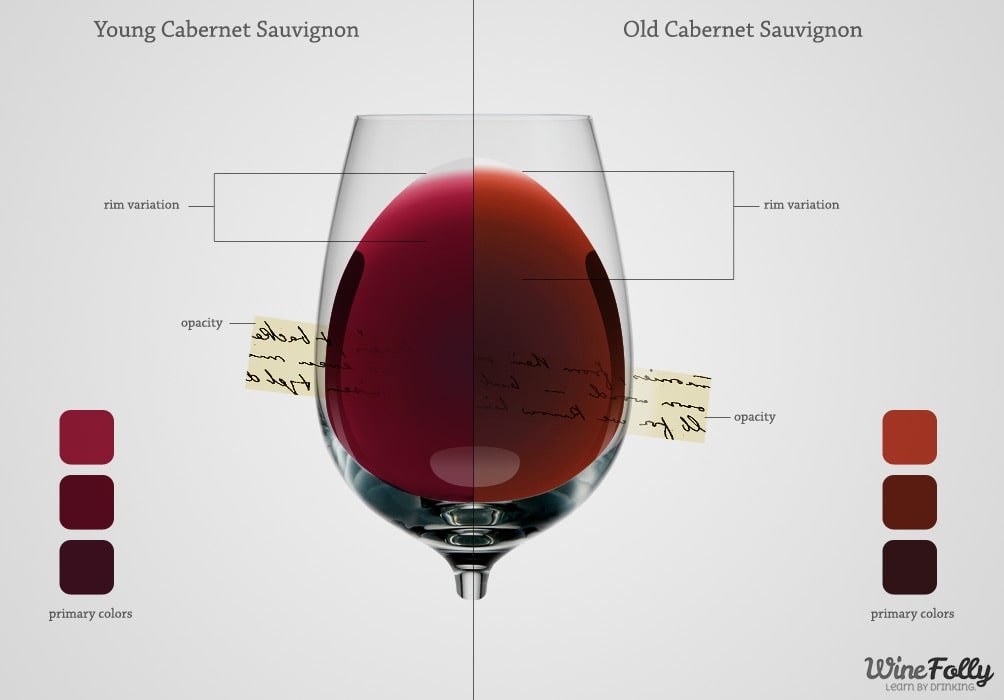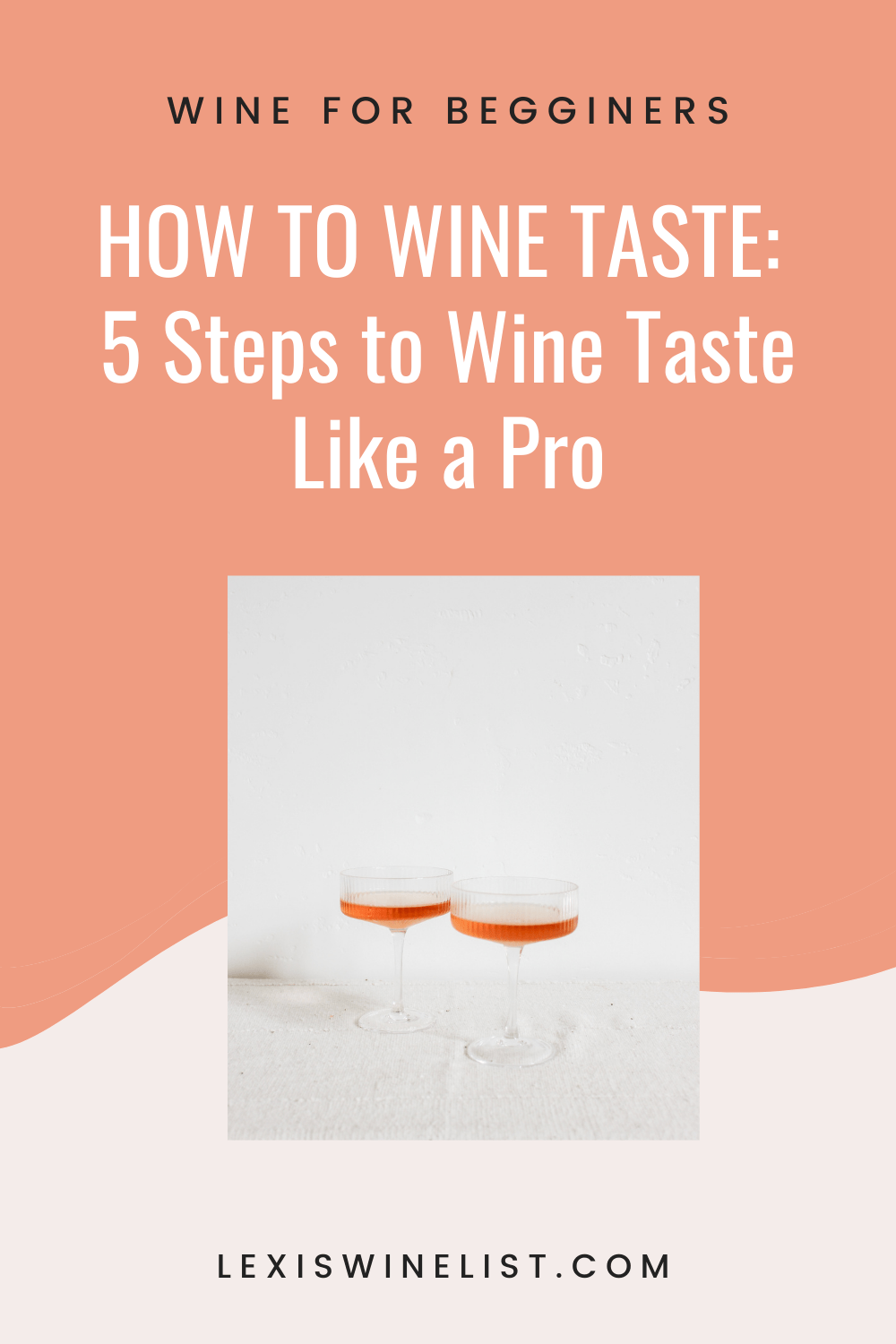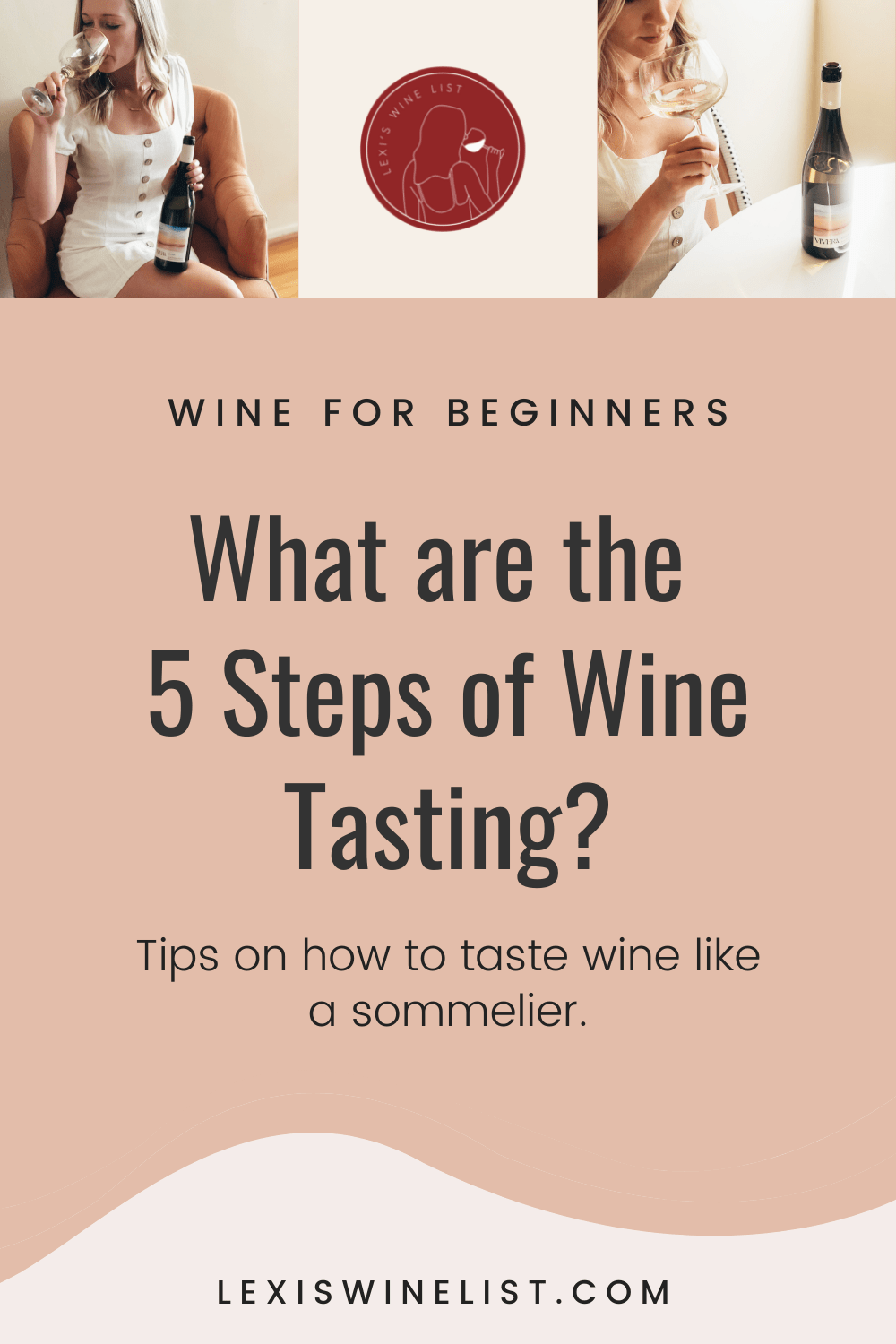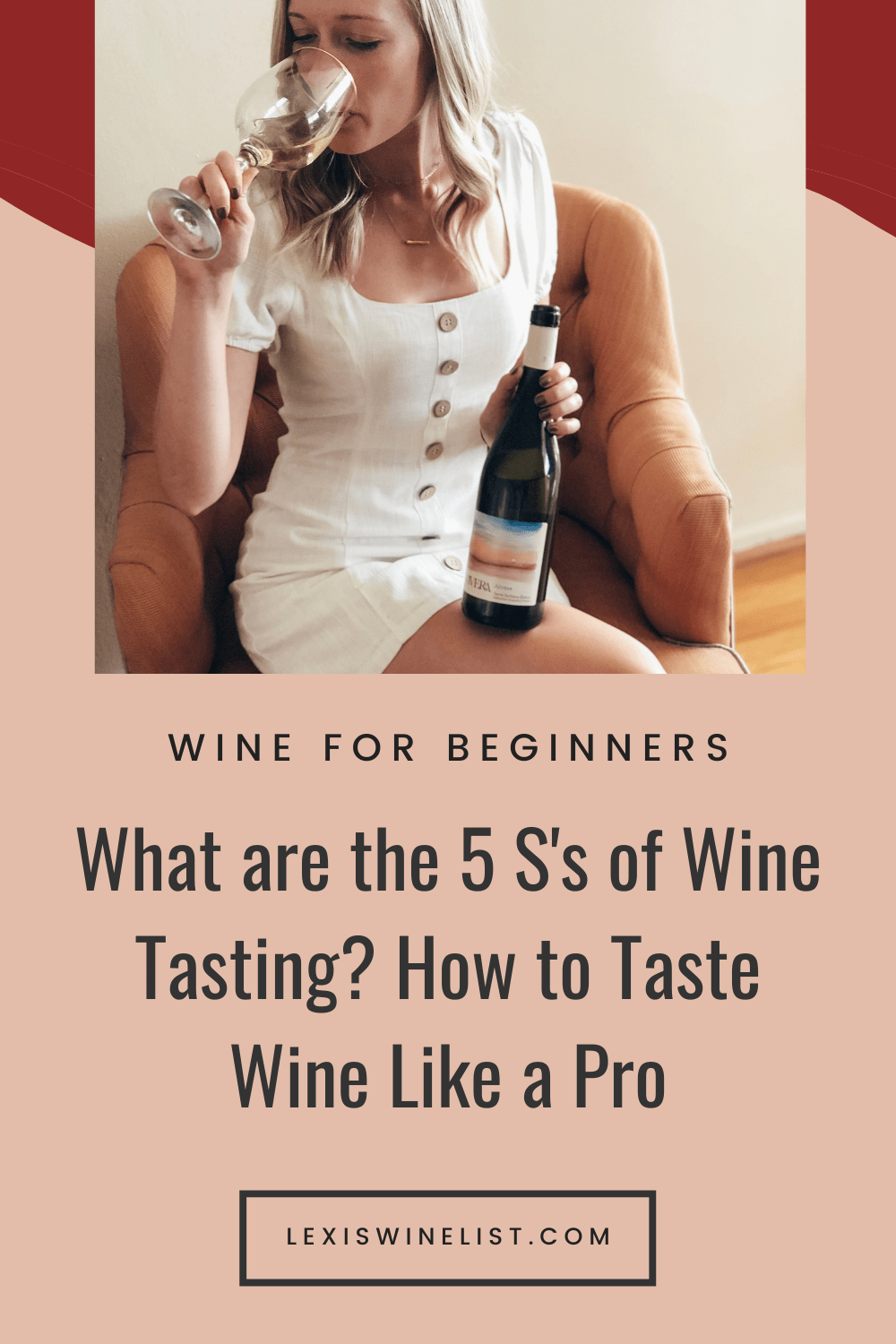What are the 5 S's of Wine Tasting? How to Wine Taste Like a Pro
What are the 5 S steps to wine tasting? If you’re ready to learn how to wine taste properly and get to know your palate, this post is for you.
When evaluating a wine, there are five steps to follow that will help you break down the wine’s structure and identify its key characteristics, so you can decide what you like or dislike about certain wines.
The 5 S’s of wine tasting are: See, Swirl, Sniff, Sip, and Savor.
In this post, I’m breaking down how to follow these steps and why they’ll help you develop your wine tasting palate. I’m also sharing some wine tasting terms to help you better shop for wine at the store, or order wine at a restaurant (and also impress your friends next time you go to wine country).
Bonus: Following these steps each time you taste a new wine will not only help you find out your personal preferences, but it will also help you navigate how to pair wine with food.
What are the 5 S's of Wine Tasting? How to Wine Taste Like a Pro
These five simple steps will help you taste wine like a sommelier, so you can get to know your palate and discover new wines you love.
Step 1: see
The first step to wine tasting is to look at your glass and evaluate the wine’s color and its intensity your glass.
The best way to do this is to tilt your glass over a white surface and look down through the wine. This is best to do in natural lighting, so you can really see the color.
Note: When looking at the color of wine, avoid holding the glass up to light and looking through the wine from beneath. This will distract from the wine’s true hue.
Why do we look at the color of the wine and what does the color of wine mean?
By just looking at the color of the wine, we can draw some conclusions about what’s in our glass. For now, we’re just going to look at how the color of wine gives us information about two things: the age and the body of said wine.
What does the color of wine tell us about the wine’s age?
As white wine gets older, it turns darker in color. White wines can range in color from lemon to golden to amber. You might see the wine develop from a pale lemon color to a deeper golden or amber color over time.
As red wine gets older, it turns lighter in color. Young red wines will be ruby or purple in the glass, but as they age, they will turn to a more rusty orange or garnet color, which you can see most easily along the rim when tilting the wine glass.
An easy way to remember this is white wine gains color as it ages, while red wine loses color as it ages.
This color chart from Wine Folly displays how a Cabernet Sauvignon turns from a ruby or purple color to a garnet or rusty color as it ages. You’ll be able to notice this color difference best when tilting your wine glass over a white surface and evaluating the rim.
What does the color of wine tell us about the wine’s body?
Secondly, the color of a wine gives us insight into the body of that wine. Typically, wines that are deeper in color will be fuller-bodied than wines that are lighter in color.
Think for reference: the pale lemon-yellow color of an Italian Pinot Grigio (light-bodied white) vs. the deeper golden color of a California Chardonnay (full-bodied white). Or compare the light ruby color of a Pinot Noir (light-bodied red) to a deep purple Syrah (full-bodied red).
Take a look at this white wine color chart from Wine Folly. Moving from left to right, the white wine is increasing in color intensity, meaning the wines to the right are most likely fuller-bodied than the wines to the left.
step 2: swirl
Before you sniff the wine, make sure you give it a good swirl in the glass. If you’re new to this technique, try starting out by swirling the glass on a flat surface. Once you gain confidence, it’ll get easier to actually pick up the wine glass by the stem and swirl it without spilling.
Why do you swirl a wine before tasting it?
Swirling the wine helps aerate it, bringing more of the wine into contact with oxygen so you can better detect the aromas. Sometimes when you first pour a glass of wine, it’s hard to smell beyond the alcohol and pick up specific notes in the wine. By moving the wine around in your glass, you allow the aromas to come to life and be sent to your nose.
This is similar to the reason you would decant a wine - more oxygen contact with the wine reveals more flavors and aromas. If you’ve ever heard a wine pro talk about a wine “opening up”, this is the concept they are referencing.
step 3: sniff
After you’ve swirled your glass, it’s time to smell the wine and see how many aromas you can identify. Tilt the glass toward you and stick your nose into the top of the glass. Feel free to try moving your nose around the glass to see if it helps you pick up on more aromas.
When smelling a wine, there are three different aroma categories to look out for:
Primary aromas
These are aromas that come from the grapes themselves and are expressed as fruits, florals, herbs, or spices. Think: green fruits, citrus, violets, bell peppers, grass, or black pepper. Each grape variety has its own unique set of aromas, depending on where it comes from, sun exposure, how it’s grown, etc.
Secondary aromas
These aromas appear during winemaking processes, for example, oak aging. Secondary aromas are notes like baking spices, oaky notes, yeast, or dairy. Think: butter, cream, vanilla, cedar, coconut, smoke, or brioche.
Tertiary aromas
These aromas develop with the aging of the wine. As the wine gets older, any fresh fruit aromas will become more dried or stewed, and you also might detect some earthy notes.
With an older white wine, you might be able to smell nutty aromas, orange marmalade, caramel, or even gasoline. When red wines develop, they’ll take on aromas like leather, earth, mushroom, or tobacco.
This step can be intimidating, so don’t feel discouraged if you don’t pick up on any specific smells right away. Wine tasting takes practice, and the more new wines you try, the better you’ll be able to identify tasting notes of different wines.
It’s also important to remember that our smells are tied to our memories, so it’s going to be impossible to identify something in a wine if you’ve never smelled that thing before. When you’re cooking or trying new produce, don’t be afraid to pick up those items and engrain the smell into your brain. This will help get your nose familiar with new smells and be able to identify them in wine.
step 4: sip
After all of the hard work you’ve done already, now you finally get to taste the wine.
When you sip the wine, be sure to swirl it around your mouth like mouthwash, and try to suck in some air while doing so. This technique takes some practice, but it’s really the best way to ensure the wine hits all parts of your palate, so you can properly evaluate it.
There are seven important structural elements to evaluate when you taste a wine:
Sweetness
Notice if the wine tastes dry or sweet. A dry wine will have less than 10 g/L of residual sugar. If you find a wine to be sweeter but not syrupy or dessert-like, you can most likely call it off-dry.
If you’ve tasted a wine and you’re not sure about its sweetness level, try plugging your nose and taking another sip. If it still tastes sweet, chances are it has some residual sugar; and if it no longer tastes sweet, it’s probably a dry wine that’s very fruity.
Acidity
Notice how much the sides of your tongue water after you take a sip of the wine. If your mouth is salivating like it would after licking a lemon wedge, the wine is high in acidity. If the wine tastes flabby or flat, it’s probably lacking acidity.
Pro tip: high acid wines are great for pairing with fatty foods, like fried chicken, creamy pastas, or french fries!
Tannins
Does your mouth feel dry or astringent after you sip a red wine? That drying sensation is due to the tannins.
Tannins come from the skins and seeds of the grapes, so because of how wine is made, you won’t find them in white wines. Highly tannic wines include Italian reds, Tannat, and Syrah.
If you find a wine’s tannins to be too intense, try pairing it with a fatty or oily dish to cut through that drying sensation.
Fun fact: tannins are a key indicator that a wine can be aged for a while, and those tannins will actually soften over time.
Alcohol
Feel that burning or warming sensation in the back of your throat or chest? That’s the alcohol, but it shouldn’t feel too intense on a well-balanced wine.
When you’re shopping for wine, feel free to use this as a reference (alcohol content is usually listed on the back label):
11% ABV and below = low (This will typically indicate a sweeter wine, as the ABV level is telling us potentially not all of the sugar has been fermented into alcohol.)
12-14% ABV = medium (Most wines you have will be in this medium range.)
Above 14% ABV = high (These big wines come from warmer climates, like Napa Valley.)
Body
How viscous is the wine? The body of the wine refers to its weight on the palate.
I like to use what’s called the milk metaphor. Think about the thickness of fat free milk, 2% milk, and heavy cream. Each of these milk styles coat your mouth in a different way, with heavy cream having the most weight.
When you drink light-bodied wines, these will have a similar consistency to fat free milk. Think: Pinot Grigio or Sauvignon Blanc. Examples of full-bodied wines include Chardonnays from California, Cabernet Sauvignon, and Zinfandel.
Flavors
Pay attention to any flavors you’re picking up on the palate. Pro tip: most of these will likely be similar to the aromas you smelled in Step 3. If you are experimenting with food and wine pairing, note which flavors change or develop as you match the wine with different cuisines.
Finish
The finish is a key indicator of the wine’s quality.
The finish of a wine refers to how long the wine’s flavors linger on your palate after you’ve taken a sip. This is not the formal way of doing it, but I usually count to 5 Mississippi and if I make it there with the flavors still lingering, I can conclude the finish is long.
It’s also important to pay attention to the way a wine’s finish develops. If it continues to evolve into more pleasant flavors, that’s a good sign. If the finish takes a turn and the wine’s aftertaste becomes undesirable, this tells you the wine is not well-balanced or properly made.
step 5: savor
Savor the wine and enjoy! As you sip the wine, pay attention to how it makes you feel. Does the wine transport you to a specific memory or place?
How does the wine change as it sits in the glass over time? Do the flavors develop with more oxygen contact or as the wine begins to warm up?
During this last step, be sure to draw some conclusions about what stood out to you about the wine - maybe what you liked or disliked. This will help you seek out wines that are more fit to your personal preferences.
Be sure to take note of these conclusions, so you can continue to find wines that suit your palate.
If you follow these steps each time you taste a new wine, I promise you’ll see your wine tasting skills start to develop. I hope this helps you learn more about your personal wine preferences and encourages you to get out of your comfort zone and try some new wines.
If you’d like to learn more about how to wine taste at home, book a private sommelier-led wine tasting with me. You can choose from a variety of themes for virtual or in-person tastings like Wine and Cheese Pairing or Sparkling Wines of the World, or we can build a custom theme that interests you most!
My private at-home wine tastings are welcoming for any level of wine enthusiast, so feel free to invite your friends and make it a party! We’ll have a blast sipping wine together and learning about how to wine taste like a pro.
In the meantime, you might also enjoy this blog post about the 11 Best Wines for Beginners and how to get started on your wine journey.
Ready to further your wine education? Enroll in a WSET class today and use code LexiStephens for a discount.
If you liked this post, pin it to Pinterest!

